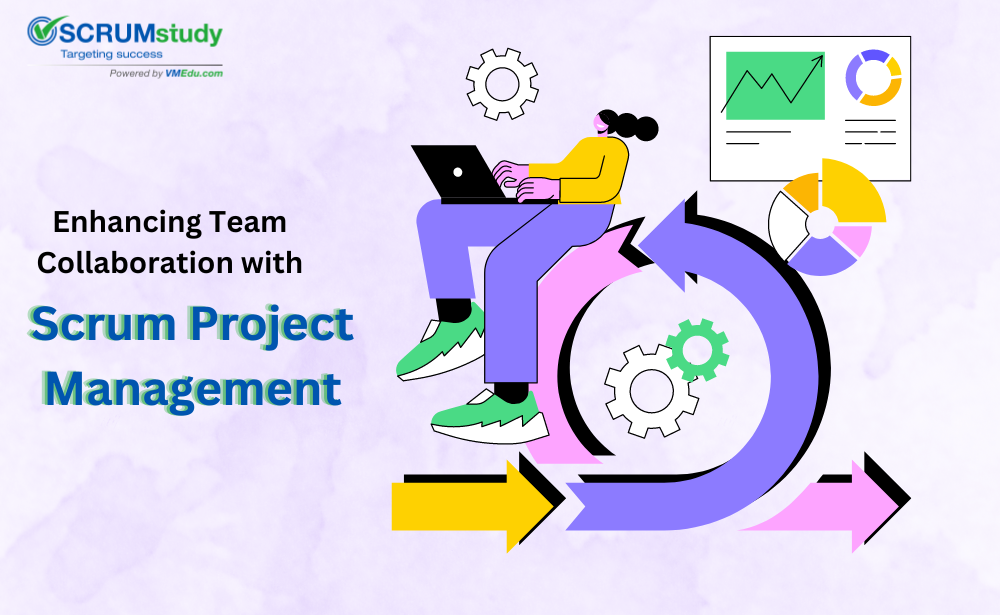
In today’s fast-paced and ever-changing business environment, effective team collaboration is critical for success. Scrum, a popular Agile framework, has emerged as a powerful tool for fostering collaboration and improving project outcomes. By breaking down complex projects into manageable tasks and emphasizing communication and teamwork, Scrum enables teams to work more efficiently and effectively. In this blog, we’ll explore how Scrum enhances team collaboration and why it is a valuable approach for any organization looking to improve their project management practices.
Understanding Scrum Project Management
Scrum is an Agile framework designed to help teams develop, deliver, and sustain complex products through iterative and incremental practices. At its heart, Scrum emphasizes openness, regular evaluation, and continuous adjustment. The framework consists of roles, events, and artifacts that work together to support team collaboration and productivity.
Key Roles in Scrum
- Scrum Master: The Scrum Master acts as a facilitator and coach for the team, ensuring that Scrum practices are followed and helping to remove any impediments that might hinder progress.
- Product Owner: The Product Owner is responsible for defining the vision of the product, managing the product backlog, and ensuring that the team is working on the most valuable tasks.
- Development Team: The Development Team is made up of professionals who collaborate to deliver product increments. They are self-organizing and cross-functional, meaning they have all the skills necessary to deliver a working product.
Scrum Events Promoting Collaboration
- Sprint Planning: During Sprint Planning, the entire Scrum Team collaborates to define the goals and tasks for the upcoming sprint. This meeting ensures that everyone is on the same page and understands their responsibilities.
- Daily Stand-up: The Daily Stand-up, or Daily Scrum, is a brief meeting where team members share updates on their progress, discuss any obstacles they are facing, and plan their work for the day. This daily communication fosters transparency and helps to keep everyone aligned.
- Sprint Review: In the Sprint Review, the team presents their completed work to stakeholders for feedback. This event encourages collaboration between the team and stakeholders, ensuring that the product meets user needs and expectations.
- Sprint Retrospective: The Sprint Retrospective is a reflective meeting where the team discusses what went well, what could be improved, and how they can enhance their processes in the next sprint. This continuous improvement cycle helps to strengthen team collaboration and performance over time.
Scrum Artifacts Supporting Collaboration
- Product Backlog: The Product Backlog is a dynamic list of features, enhancements, and fixes that need to be addressed. The Product Owner manages the backlog, prioritizing items based on value and importance. This transparency helps the team understand what needs to be done and why.
- Sprint Backlog: The Sprint Backlog is a subset of the Product Backlog items that the team commits to completing during a sprint. It includes detailed tasks and is regularly updated to reflect progress. This artifact keeps the team focused and aligned on their goals.
- Increment: An Increment is a working piece of the product that has been completed during a sprint. Regularly delivering increments ensures that the team is consistently collaborating to create valuable outcomes.
Benefits of Scrum in Enhancing Team Collaboration
- Improved Communication: Regular Scrum events and artifacts promote constant communication among team members and stakeholders. This helps to reduce misunderstandings and ensures that everyone is informed and aligned.
- Increased Transparency: Scrum practices make the work and progress visible to everyone involved. This openness builds trust and accountability among team members.
- Enhanced Flexibility: The iterative nature of Scrum enables teams to swiftly adapt to changes. Teams can respond to feedback and new requirements more effectively, improving their ability to collaborate and deliver value.
- Empowered Teams: Scrum empowers teams to make decisions about how to complete their work. This autonomy encourages creativity, innovation, and a sense of ownership, leading to better collaboration and outcomes.
- Continuous Improvement: The Sprint Retrospective provides a structured opportunity for the team to reflect on their processes and identify areas for improvement. This continuous improvement cycle helps teams to enhance their collaboration and performance over time.
Conclusion
Scrum project management is a powerful framework that enhances team collaboration by promoting transparency, communication, and continuous improvement. By adopting Scrum, organizations can foster a collaborative environment where teams are empowered to deliver high-quality products efficiently. Whether you are working on a small project or a large-scale initiative, Scrum’s emphasis on teamwork and iterative progress can help your team achieve greater success. Embrace Scrum to unlock the full potential of your team and drive better project outcomes.